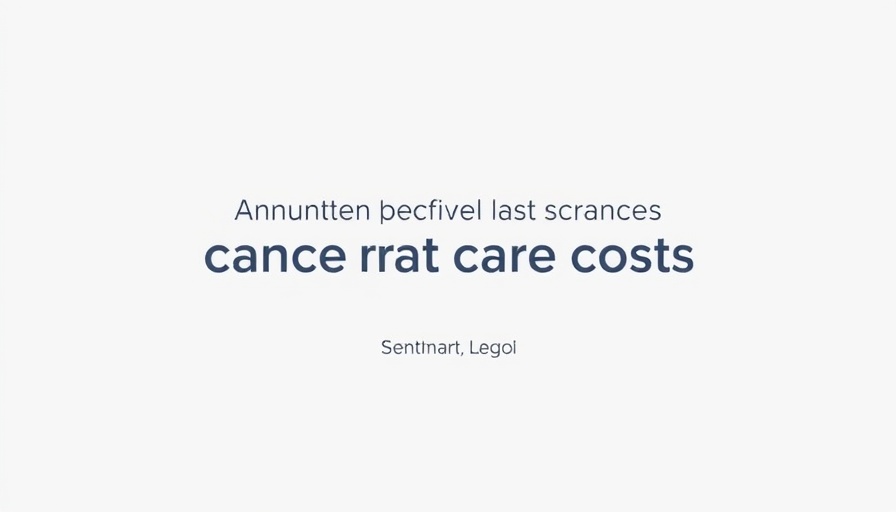
Understanding Financial Toxicity in Cancer Care
Cancer treatment can be a daunting journey, not only physically and emotionally but also financially. One term that often emerges in discussions of cancer care is "financial toxicity." This refers to the financial strain that patients may face, including out-of-pocket expenses, lost income due to time taken off work, and costs associated with travel and lodging during treatment. These financial burdens can significantly affect the well-being of patients and their families, often leading to additional stress during an already challenging time.
In 'Navigating the Cost of Cancer Care - Introduction', the discussion dives into financial concerns during cancer treatment, exploring key insights that sparked deeper analysis on our end.
Your Support Network Matters
When navigating these complexities, it's vital to lean on your Mayo Clinic care team or support network. Your care team includes a variety of professionals — from doctors and nurses to financial navigators — all dedicated to aiding you throughout your cancer journey. They are there to answer questions, provide support, and help identify resources tailored to your needs.
Maximizing Your Treatment Plan
Adhering to your prescribed treatment plan is crucial. Skipping tests or medications to reduce costs can hinder your treatment's success. It's essential to keep all appointments and openly communicate with your care team about any concerns regarding financial burdens. They can assist you in finding ways to manage these costs without compromising your health.
Finding Resources and Support
The Mayo Clinic Cancer Education Blog serves as a valuable online resource, providing education and connecting patients with others facing similar challenges. By embracing this community, patients can share experiences, gather insights, and gain emotional support throughout their treatment.
Concluding Thoughts
As you embark on your cancer treatment journey, remember that the Mayo Clinic care team is there for you every step of the way. Understanding the financial aspects and how to navigate them can empower you during this time. The importance of support cannot be overstated — whether through professional guidance or community connections; it can make all the difference in your healing journey.
 Add Row
Add Row  Add
Add 




Write A Comment